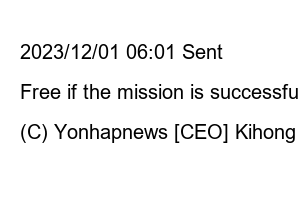국민연금 반환일시금 지급대상Article report
Autocomplete is turned on.
Delivery time2023-12-01 06:01
The range of relatives who will receive a lump sum when a national pension subscriber or beneficiary dies is expected to be significantly reduced.
This is because the pension authorities decided to reduce and adjust the lump sum payment target in line with changes in household types, such as the increase in single-person households.
According to the Ministry of Health and Welfare and the National Pension Service on the 1st, the recently released 5th National Pension Comprehensive Plan contains a policy to improve the national pension lump sum system.
[Produced by Kwon Do-yoon] Photo synthesis/illustration
(Seoul = Yonhap News) Reporter Seo Han-ki = The range of relatives who will receive a lump sum when a national pension subscriber or beneficiary dies is expected to be significantly reduced.
This is because the pension authorities decided to reduce and adjust the lump sum payment target in line with changes in household types, such as the increase in single-person households.
According to the Ministry of Health and Welfare and the National Pension Service on the 1st, the recently released 5th National Pension Comprehensive Plan contains a policy to improve the national pension lump sum system.
The Ministry of Health and Welfare said, “The lump sum payment system that is paid when a subscriber or beneficiary dies and does not meet certain conditions and do not receive survivor’s pension is complex, and in a situation where the household structure is changing, such as the number of single-person households, there are voices calling for an improvement in the system. “It reflects,” he explained.
The national pension is a retirement income security system implemented by the government. If a subscriber pays insurance premiums for at least 10 years (120 months) until the age of 59, he or she can receive a pension like a monthly salary for the rest of his life from the time he reaches the pension age until his death.
However, the situation changes when the subscriber or beneficiary dies. In order to settle the insurance premiums paid so far and provide funeral assistance, only a lump sum has been paid since 1995 to the bereaved family and a wider range of relatives separately specified in the National Pension Act.
The lump-sum payment related to death is divided into a lump-sum death payment or a lump-sum refund depending on whether the survivor’s requirements under the National Pension Act are met.
As of 2022, a total of 78.6 billion won in lump-sum death-related benefits was paid to 15,834 people.
[Comparison of lump sum death payment vs. lump sum return (reason for death) systems]
policy
Payment target
payment amount
Lump sum death payment
Spouse, child, parent, grandchild, grandparent, sibling, collateral blood relative within the 4th degree of consanguinity*If the survivor pension or lump sum refund was not paid
Premium paid (of the deceased) + interest*However, the limit is 4 times the greater of the final monthly income amount or average monthly income amount (B value).
Lump sum refund (reason for death)
Spouse, children, parents, grandchildren, grandparents*Need to meet age, disability, and livelihood requirements
Premium paid (of the deceased) + interest
A lump sum refund is available when a subscriber or former subscriber fails to complete the minimum subscription period of 10 years and reaches the mandatory national pension subscription age of 60, or is no longer eligible to subscribe to the national pension due to death, loss of nationality, or emigration, and receives the pension. If the requirements are not met, the benefit is paid in a lump sum with interest added to the premiums paid.
In particular, if the subscriber or former subscriber dies, but is not eligible for the survivor’s pension, the lump sum refund is distributed to the spouse, children (under 25 years of age or disabled level 2 or higher), parents (according to the scope and order of survivorship separately specified in the National Pension Act) It is paid in the following order: (age 61 or older or disabled level 2 or higher), grandchildren (under 19 years old or disabled level 2 or higher), and grandparents (age 61 or older or disabled level 2 or higher).
The lump-sum death benefit is a type of funeral assistance or compensation paid to a wider range of survivors under the Civil Act when the subscriber, former subscriber, or pension recipient dies, but there is no surviving family under the National Pension Act and thus cannot receive the survivor’s pension or even a lump-sum refund. It’s salary.
The amount is approximately four times the average monthly income of the national pension subscriber during the subscription period.
If the pension beneficiary dies after June 30, 2021, and the total pension received while alive is less than the lump-sum death payment, the difference between the lump-sum death payment and the total pension already received will be paid.
The range of relatives who can receive a lump-sum death payment is much wider than the lump-sum return payment.
It is paid to the person with the highest priority among spouses, children, parents, grandchildren, and grandparents, as well as siblings or collateral blood relatives within the fourth degree of descent who were dependent on the deceased.
The Ministry of Health and Welfare has reorganized and unified the complex lump-sum payment system, which is divided into a lump-sum refund and a lump-sum death payment, and furthermore, the recipients of lump-sum payments are spouses, immediate ascendants (father, mother, grandfather, grandmother, maternal grandfather, maternal grandmother), and direct descendants (biological children, maternal grandmother, etc.). We plan to improve the death-related benefit system, including limiting it to grandchildren and great-grandchildren.
shg@yna.co.kr
Report via KakaoTalk okjebo
2023/12/01 06:01 Sent
Free if the mission is successful!
Go to event
(C) Yonhapnews [CEO] Kihong Ki

